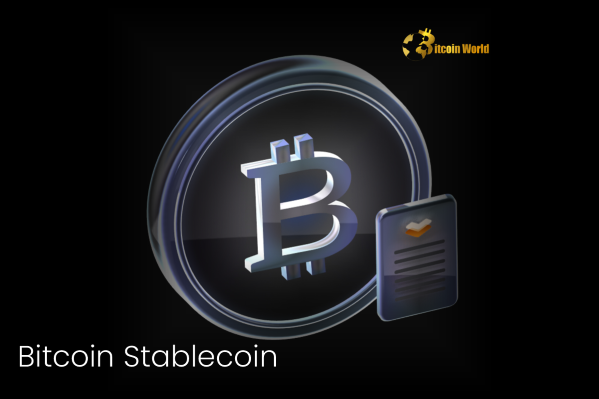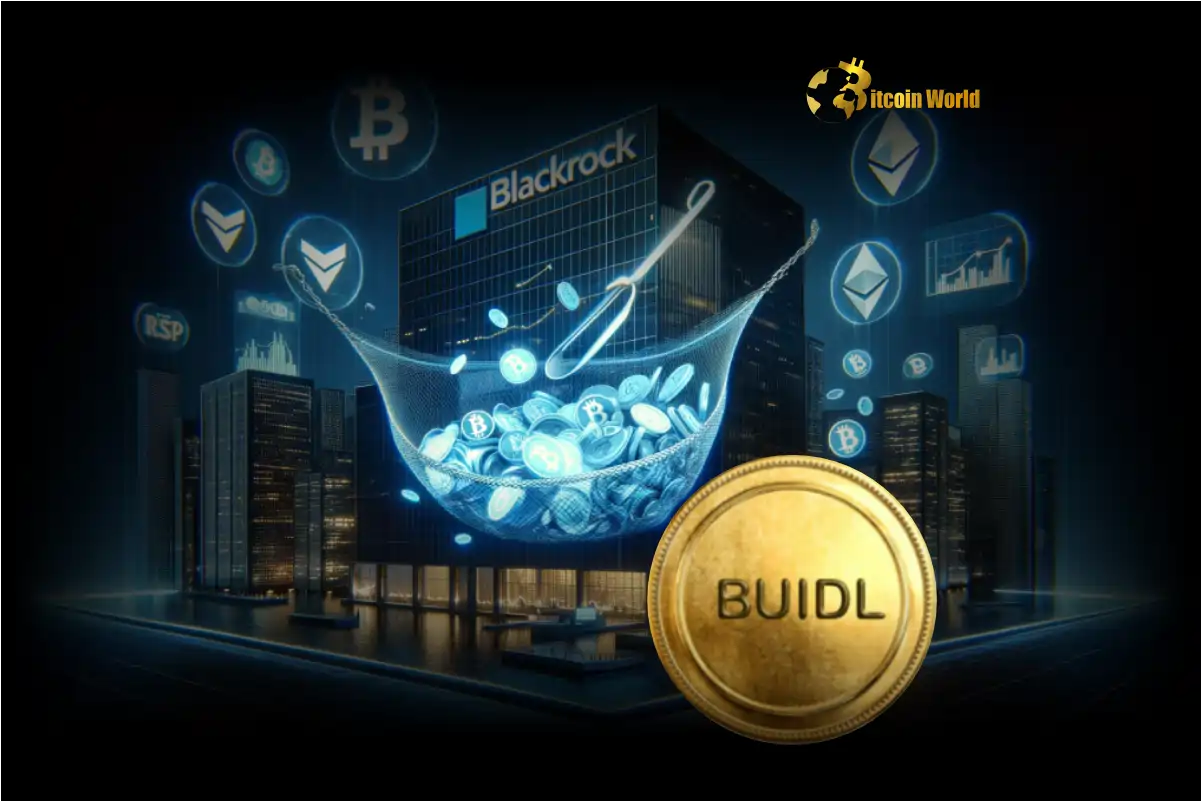BitcoinWorld

Bitcoin Stablecoin: Elastos Unleashes BTCD, Revolutionizing BTC DeFi
Are you ready for a major step forward in bringing stability to the world of Bitcoin DeFi? Elastos, known for its innovative work in decentralized technologies, has just unveiled a groundbreaking new asset: BTCD. This isn’t just any stablecoin; it’s a Bitcoin stablecoin designed with robust mechanics to provide a stable dollar value, directly backed by BTC itself.
What is the Elastos BTCD Stablecoin?
Elastos has officially launched BTCD stablecoin, a digital asset pegged to the US dollar but uniquely collateralized by Bitcoin. Developed as part of their BeL2 protocol – a layer designed to bring Bitcoin’s security and liquidity into the DeFi space – BTCD represents a significant effort to bridge the gap between the world’s largest cryptocurrency and the need for price stability in decentralized applications.
The core idea behind BTCD is to create a stable unit of account within the Bitcoin ecosystem without relying on centralized fiat reserves. Instead, it leverages the inherent value of Bitcoin itself, but with a crucial twist: significant overcollateralization.
- Asset Backing: Primarily backed by Bitcoin (BTC).
- Pegging Mechanism: Aims to maintain a stable 1:1 peg with the US dollar.
- Protocol: Launched on Elastos’s BeL2 protocol.
- Overcollateralization: Features a high collateralization ratio, reported between 160% and 200%.
Why is a BTC-Backed Stablecoin Important for Bitcoin DeFi?
Bitcoin, while the king of crypto in terms of market cap and security, is famously volatile. This volatility makes it challenging to use directly in many decentralized finance (DeFi) applications, such as lending, borrowing, or trading, where predictable value is essential. A BTC-backed stablecoin like BTCD addresses this fundamental problem.
Imagine trying to take out a loan denominated in BTC. If the price of Bitcoin drops significantly, the value of your loan decreases, potentially triggering liquidations or making the loan less attractive. Conversely, lending BTC means the value of your principal could fluctuate wildly. Stablecoins provide a much-needed anchor in this turbulent sea.
By creating a stable, dollar-pegged asset derived from BTC, BTCD allows users to participate in DeFi activities on protocols like BeL2 using the value locked in their Bitcoin, but with the stability of a stablecoin. This unlocks new possibilities for yield generation, borrowing against BTC, and stable value transfer within the Bitcoin ecosystem, facilitated by Elastos.
How Does BTCD’s Overcollateralization Work?
One of the standout features of Elastos BTCD is its high level of overcollateralization, ranging from 160% to 200%. This means that for every dollar worth of BTCD minted, there is between $1.60 and $2.00 worth of Bitcoin locked up as collateral.
This high ratio serves as a crucial buffer against Bitcoin’s price volatility. If the price of BTC drops, the collateral value decreases, but the high overcollateralization ensures that the system can absorb significant price swings before the collateral value falls below the value of the outstanding stablecoins. This mechanism is designed to enhance the stability and security of the BTCD peg.
In systems with lower collateralization or reliance on volatile assets, a sharp price drop can lead to rapid liquidations and even de-pegging events. BTCD’s conservative collateralization ratio aims to mitigate these risks, providing a stronger foundation for its stability.
The Digital Bretton Woods Vision and On-Chain Arbitrage
CoinDesk reported that BTCD is designed to mimic a ‘digital Bretton Woods system’. The original Bretton Woods system pegged global currencies to the US dollar, which was in turn pegged to gold. In BTCD’s digital parallel, Bitcoin acts as the underlying ‘gold’ or reserve asset, and BTCD acts as the stable ‘dollar’ equivalent within the digital economy.
Maintaining this peg relies heavily on on-chain arbitrage. Arbitrageurs play a vital role in stablecoin systems by profiting from small price discrepancies between the stablecoin and its peg. If BTCD trades slightly below $1, arbitrageurs can buy it cheaply and redeem it for $1 worth of the underlying BTC collateral (minus fees), pushing the price back up. If BTCD trades slightly above $1, arbitrageurs can mint new BTCD using BTC collateral and sell it on the market for a profit, increasing supply and pushing the price back down.
This constant activity by arbitrageurs helps to keep the BTCD stablecoin trading close to its intended $1 peg, leveraging market forces directly on the blockchain. The BeL2 protocol provides the infrastructure for these on-chain operations.
Benefits of BTCD for the Bitcoin Ecosystem
The introduction of BTCD brings several potential benefits:
- Enhanced Stability: Provides a stable medium of exchange and store of value within Bitcoin-centric DeFi applications.
- Increased Capital Efficiency: Allows BTC holders to utilize their assets in DeFi without selling their Bitcoin, unlocking liquidity.
- Reduced Volatility Risk in DeFi: Makes lending, borrowing, and trading on BeL2 and potentially other compatible protocols more predictable.
- Strengthening Bitcoin DeFi: Adds a crucial building block needed for a mature and functional decentralized finance ecosystem around Bitcoin.
- Decentralization: As a BTC-backed stablecoin, it relies on decentralized collateral (Bitcoin) and on-chain mechanisms, reducing reliance on centralized entities compared to fiat-backed stablecoins.
Potential Challenges and Considerations
While promising, the launch of Elastos BTCD also faces potential challenges:
- Collateralization Management: Maintaining the required overcollateralization ratio requires robust liquidation mechanisms to handle significant and rapid drops in BTC price.
- Oracle Reliance: The system relies on accurate and timely price feeds (oracles) for Bitcoin’s value to manage collateral and liquidations effectively. Oracle failures or manipulation could pose risks.
- Adoption and Liquidity: The success of BTCD depends on gaining user adoption and sufficient liquidity on exchanges and DeFi protocols to facilitate efficient arbitrage and use.
- Smart Contract Risk: As with any DeFi protocol, there is inherent risk in the smart contracts governing the minting, burning, and collateral management processes.
What Does This Mean for Bitcoin DeFi?
The launch of a robust, BTC-backed stablecoin like BTCD on BeL2 is a significant development for the nascent Bitcoin DeFi space. For years, the vast liquidity and security of Bitcoin have been largely siloed from the rapid innovation happening in DeFi on other chains like Ethereum.
Protocols like BeL2 and assets like BTCD are attempting to change this. By providing essential DeFi primitives – in this case, a stable unit of account – they pave the way for more complex and useful applications to be built, potentially unlocking billions in value currently held in inert Bitcoin wallets.
This move by Elastos signals growing momentum in bringing Bitcoin’s power to decentralized finance. It’s a space to watch closely as more protocols and assets emerge to build out the Bitcoin DeFi landscape.
Actionable Insights for Users
For those interested in exploring BTCD and the BeL2 protocol:
- Research: Understand the mechanics of BTCD, including how collateralization and liquidation work.
- Evaluate Risk: Be aware of the risks associated with stablecoins (de-pegging, smart contract risk) and the specific risks related to volatile collateral.
- Look for Opportunities: Explore where BTCD is available for trading or use within DeFi protocols on Elastos/BeL2 to potentially earn yield or use it as collateral.
- Stay Informed: Follow updates from Elastos and the BeL2 team regarding the stablecoin’s performance and any changes to the protocol.
Conclusion: A Stable Future for Bitcoin DeFi?
Elastos’s launch of BTCD is a bold step towards building a more stable and functional Bitcoin DeFi ecosystem. By leveraging Bitcoin’s security and value with a carefully designed overcollateralization model and on-chain arbitrage, the BTCD stablecoin aims to provide a reliable dollar peg within the BeL2 protocol. While challenges remain, the potential for a robust, BTC-backed stablecoin to unlock new possibilities for Bitcoin holders in DeFi is immense. This development could be a key piece in realizing the full potential of decentralized finance built around the world’s most secure blockchain.
To learn more about the latest Bitcoin trends, explore our articles on key developments shaping DeFi institutional adoption.
This post Bitcoin Stablecoin: Elastos Unleashes BTCD, Revolutionizing BTC DeFi first appeared on BitcoinWorld and is written by Editorial Team





